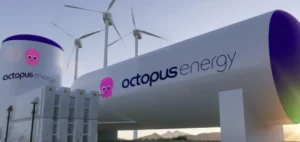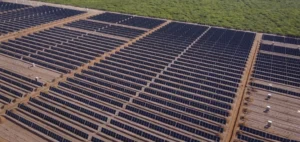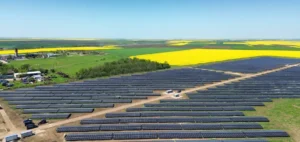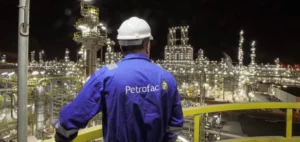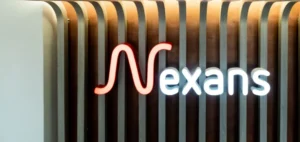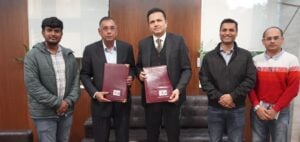One of Europe’s largest lithium mines – a white powder that is intoxicating the electric battery industry and should enable cars to wean themselves off CO2-emitting oil – will be built by 2027 in the Massif Central in France.
The “Emili” project, announced Monday morning by French industrial minerals group Imerys, will help Europe move away from its near-complete dependence on China for the lithium needed for the batteries in electric cars, which are supposed to be the only new vehicles that can be sold in the European Union from 2035.
It took 18 months of drilling and studies carried out by mining specialists in the subsoil of a kaolin quarry owned by the group since 2005 in Beauvoir in the Allier region (center), to confirm the economic interest of the mine.
With the exploitation of this deposit, “we will help Europe to decarbonize”, Alessandro Dazza, CEO of Imerys, told the press on Monday, as he was to receive local elected officials on site.
“This project, which is exemplary in environmental and climate terms, will drastically reduce our need to import lithium,” French Economy Minister Bruno Le Maire praised in the group’s statement. He adds that he will be supported by the French government.
– “One million tons” –
Of the ten or so European lithium projects, Imerys’ is the second largest, after Rio Tinto abandoned its project in Serbia in January, and behind that of start-up Vulcan in Germany, based on the exploitation of brine from the Rhine Valley.
The “concentrations and quantities” of lithium were considered “very attractive” in Beauvoir, which has been home to a quarry producing 30,000 tons of kaolin per year for porcelain and tiles since 1850.
Since the 1960s, the Bureau de Recherches Géologiques et Minières (BRGM) had identified the presence of lithium in the subsoil. But Imerys did not know until recently what the content was and therefore whether the site could be profitable.
“We estimate the deposit to be around one million tons of lithium oxide,” Dazza said. This is “much more than what BRGM thought” initially (320,000 tons).
This will produce “34,000 tons of lithium hydroxide per year from 2028 for at least 25 years”, and “equip the equivalent of 700,000 electric vehicles with lithium-ion batteries” per year, according to Imerys.
This is far from negligible: current global production of lithium carbonate or hydroxide, the two elements used in batteries, does not exceed 450,000 tons worldwide, according to Imerys. And by 2040, the International Energy Agency (IEA) predicts that it will be multiplied by 40.
At Beauvoir, “there could be more than we have estimated, we will continue the studies to see if we could have 30 or 35 years of operation,” Dazza added.
The concentration is in the order of 0.9 to 1%, i.e. it takes nearly 100 tons of rock to extract one ton of lithium.
The group estimates its production costs “between 7 and 9 euros per kilo excluding initial investment, which would guarantee “an interesting return on investment”. And it promises 1,000 direct and indirect jobs in Auvergne-Rhône-Alpes, on two sites: the underground mine for extracting the mica containing the lithium, at a depth of between 75 and 350 meters; and a plant for purifying the minerals and transforming them into lithium hydroxide, less than 100 kilometers from the mine.
– Environmental impact –
There are still the likely environmental criticisms against this new mining project in the heart of France.
Imerys announced that the mine would adopt an international standard under development, “IRMA”, which aims to reduce toxic discharges and minimize water consumption.
Mining will be done underground, which will minimize dust, and the rock will be transported by pipeline and railroad to avoid trucks between the mine and the industrial site. As for the emissions generated by the exploitation, the group estimates them at 8kg of C02 per ton of lithium, against 16 to 20kg in Australia and China, according to him.




